Side sleepers need special mattresses for comfort and support. The wrong mattress can cause pain and poor sleep. The best mattresses for side sleepers in 2025 offer pressure relief and spinal alignment.
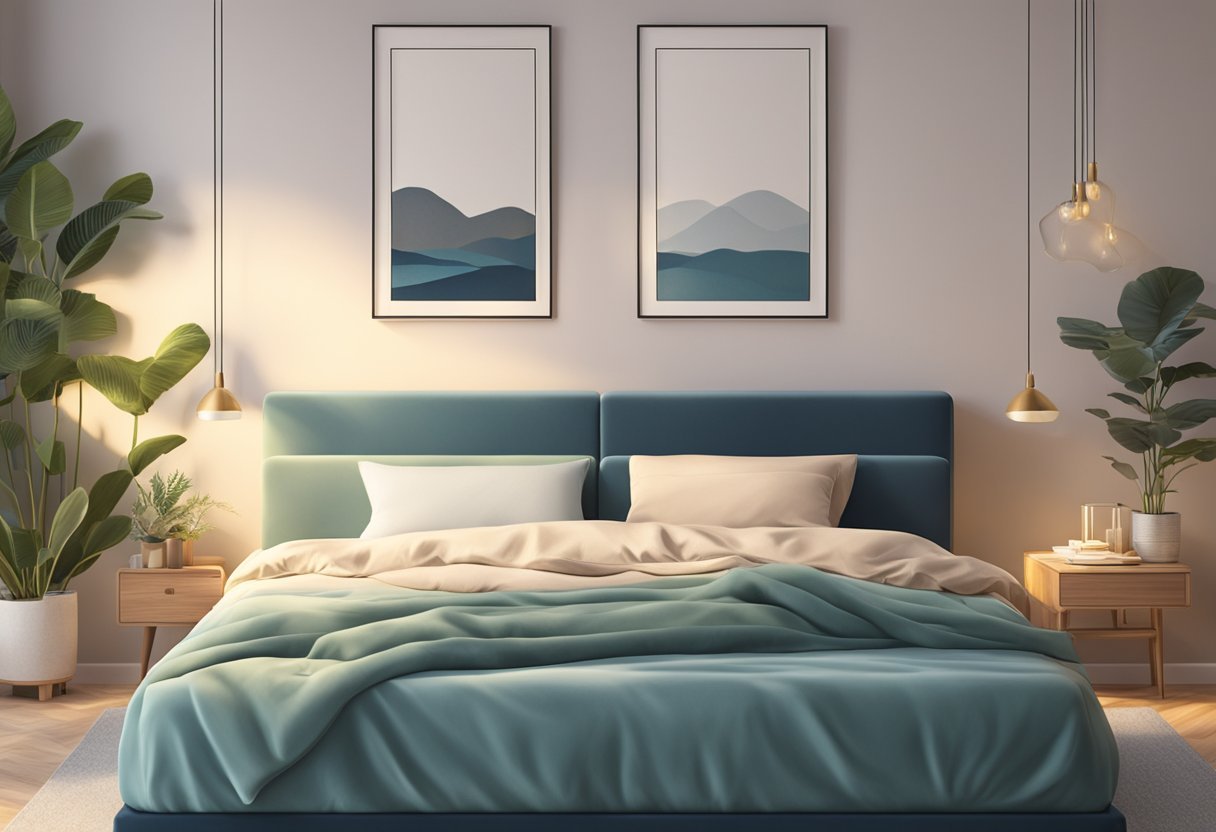
Good options include memory foam, latex, and hybrid mattresses. These mattresses contour to the body’s curves. They reduce pressure on hips and shoulders.
Firmness level matters too. Medium to medium-soft mattresses work well for most side sleepers. But body weight and personal preference play a role in choosing the right feel.
Key Takeaways
- Side sleepers need mattresses that relieve pressure and align the spine
- Memory foam, latex, and hybrid mattresses are top choices for side sleepers
- Medium to medium-soft firmness suits most side sleepers
Importance of Choosing the Right Mattress for Side Sleepers
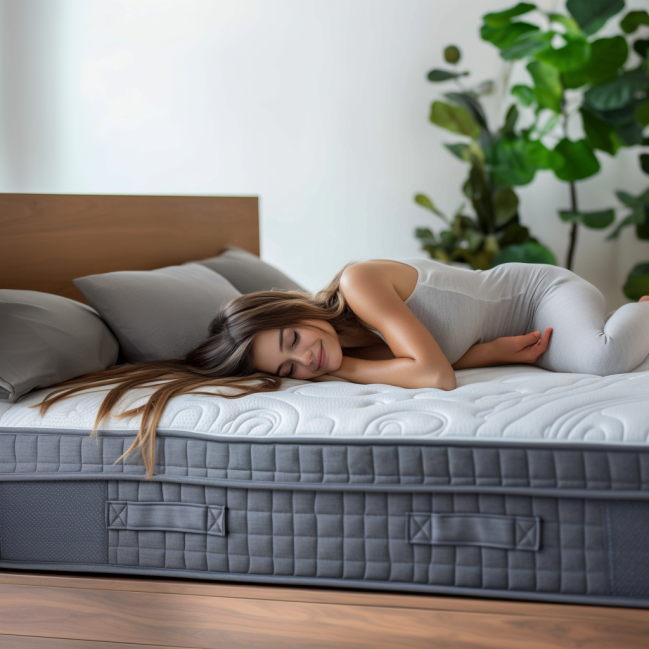
Side sleepers need a mattress that supports their body’s natural curves. The right mattress can help prevent pain in the hips, shoulders, and back.
A good mattress for side sleepers should be soft enough to cushion pressure points. At the same time, it needs to be firm enough to keep the spine aligned.
Without proper support, side sleepers may wake up with aches and pains. They might also toss and turn during the night, leading to poor sleep quality.
The right mattress can improve sleep posture for side sleepers. This means less strain on joints and muscles. Better sleep posture can lead to more restful nights and energized mornings.
Memory foam and hybrid mattresses often work well for side sleepers. These materials conform to the body’s shape while providing support.
When shopping for a mattress, side sleepers should look for:
- Medium to medium-soft firmness
- Pressure relief in the shoulders and hips
- Spinal alignment support
- Motion isolation (for couples)
Taking the time to find the right mattress is worth it. A good mattress can improve sleep quality and overall health for side sleepers.
Anatomy of a Mattress Suited for Side Sleepers
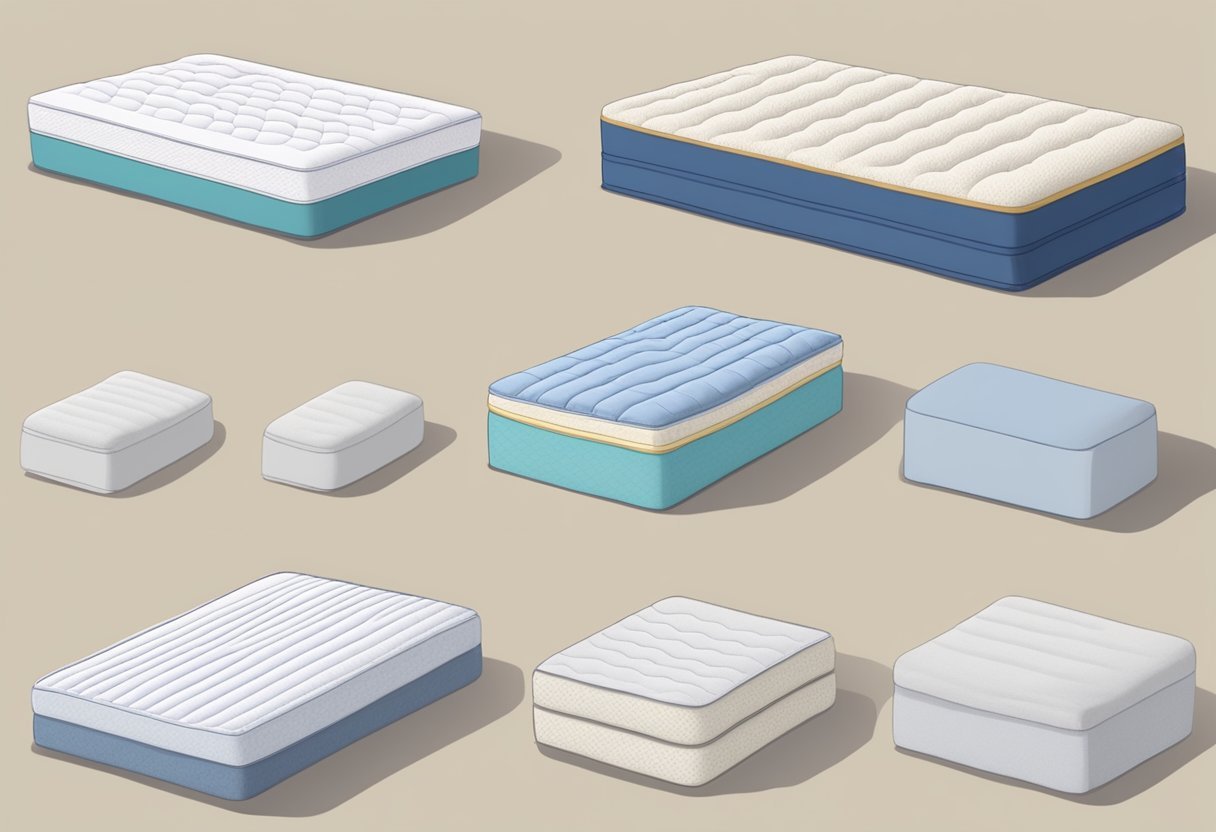
A mattress for side sleepers needs specific features to provide comfort and support. The top layer is crucial. It should be soft enough to cushion pressure points like hips and shoulders.
Memory foam or latex work well for this purpose. They contour to the body’s curves and relieve pressure. The thickness of this comfort layer matters too. A 2-4 inch layer is often ideal for side sleepers.
Below the comfort layer lies the support core. This part gives the mattress its structure and prevents sagging. For side sleepers, a medium-firm to firm support core is best. It keeps the spine aligned while allowing some give.
Pocketed coils or high-density foam make good support cores. They offer targeted support where it’s needed most. The edge support is another key feature. Strong edges let side sleepers use the whole mattress surface.
Here’s a quick breakdown of a side sleeper mattress:
- Top layer: 2-4 inches of memory foam or latex
- Support core: Medium-firm to firm pocketed coils or foam
- Edge support: Reinforced perimeter for stability
The right combination of these elements creates a mattress that cradles pressure points and keeps the spine straight. This design helps side sleepers wake up without aches and pains.
Top Mattress Types for Side Sleepers
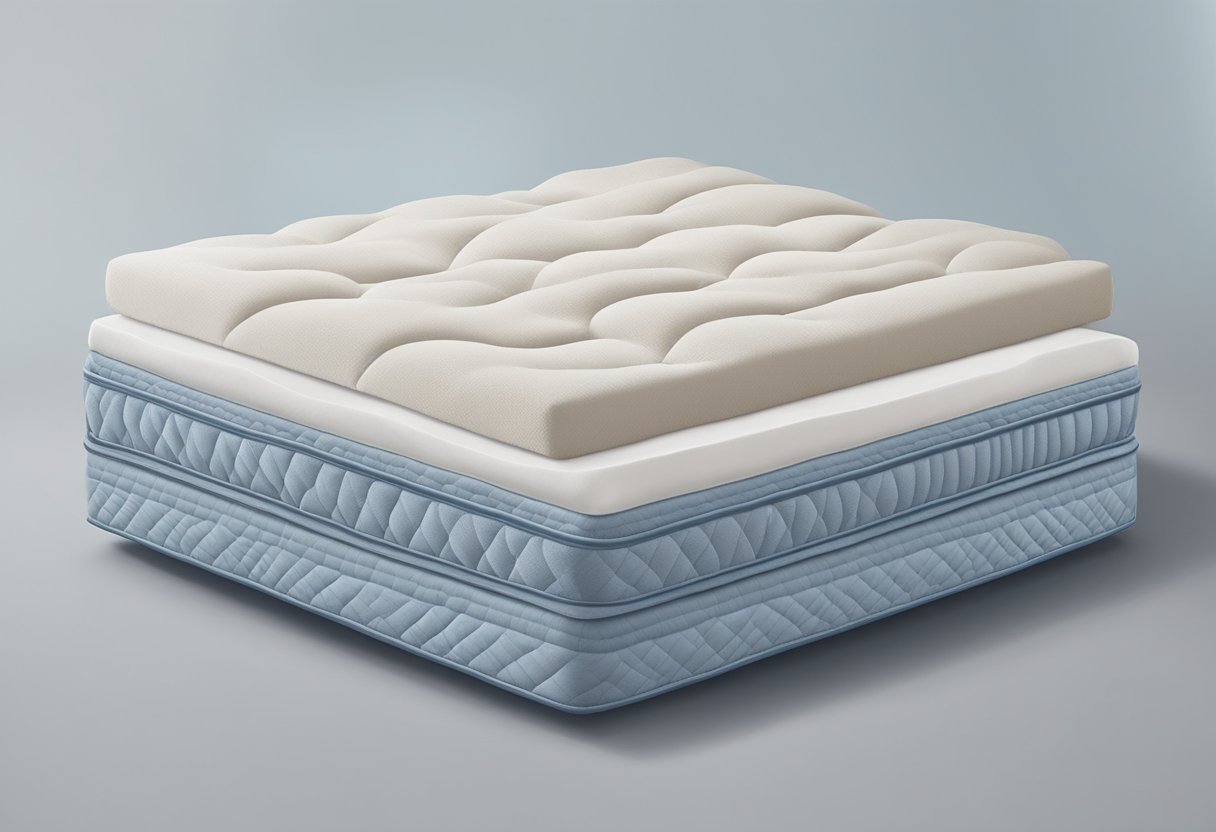
Side sleepers need mattresses that cushion pressure points and keep the spine aligned. Some mattress types excel at providing comfort and support for this sleep position.
Memory Foam Mattresses
Memory foam molds to the body’s curves. This helps relieve pressure on hips and shoulders. It also keeps the spine straight while sleeping on your side.
Many memory foam mattresses have cooling features. These prevent overheating, a common issue with this material. Some use gel infusions or open-cell foam for better airflow.
Memory foam comes in different densities. Higher density foam lasts longer but may feel firmer. Lower density foam is softer but might not be as durable.
Hybrid Mattresses
Hybrid mattresses combine innersprings with foam or latex layers. This mix offers both bounce and pressure relief for side sleepers.
The coil base provides support and helps with spine alignment. The comfort layers on top cushion pressure points.
Many hybrids use pocketed coils. These move independently to reduce motion transfer. This is helpful for couples who share a bed.
Hybrid mattresses often have good edge support. This makes it easier to get in and out of bed.
Latex Mattresses
Latex mattresses are bouncy yet contouring. They offer a nice balance of support and pressure relief for side sleepers.
Natural latex is eco-friendly and durable. It resists sagging and can last many years. Synthetic latex is a cheaper option but may not be as long-lasting.
Latex sleeps cooler than memory foam. It has tiny air bubbles that allow for better airflow. This helps prevent overheating during the night.
These mattresses come in different firmness levels. Medium to medium-firm options often work best for side sleepers.
What to Look for in a Side Sleeper Mattress
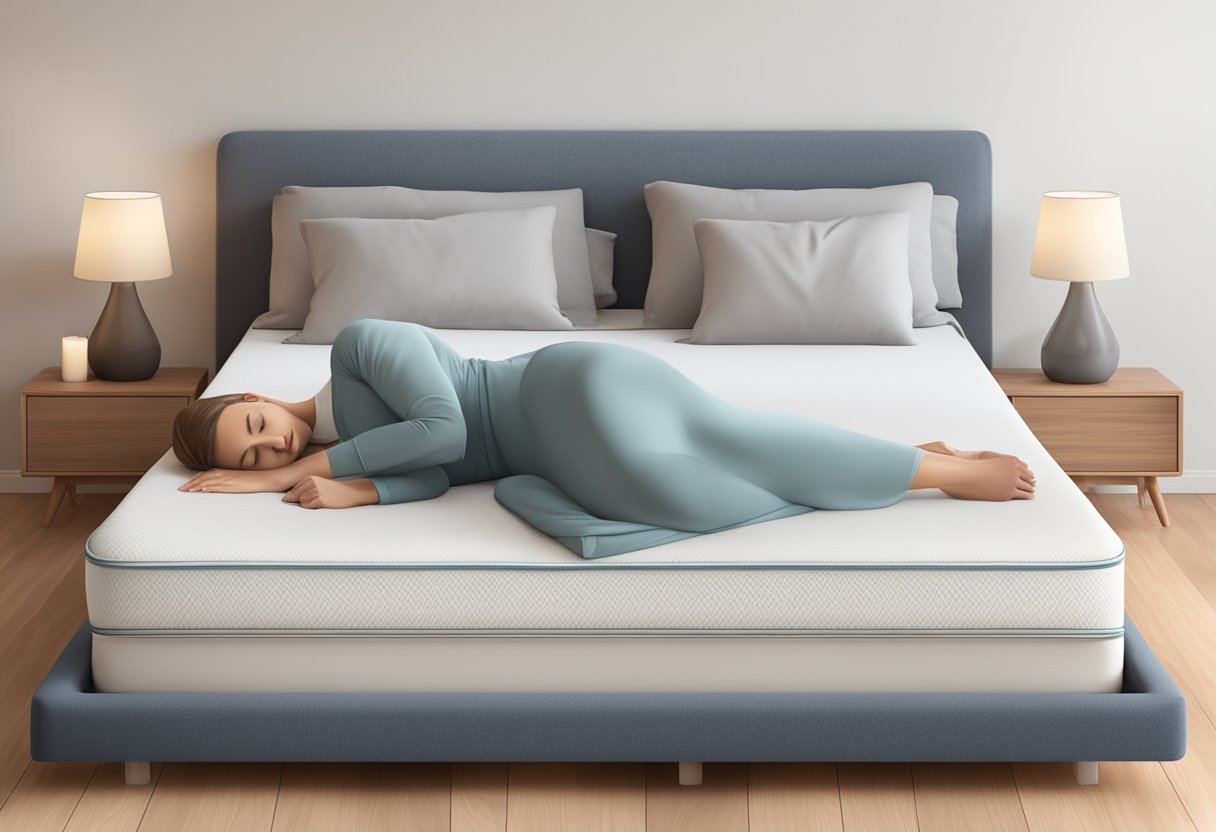
Side sleepers need mattresses that offer the right balance of support and comfort. Key factors to consider include firmness level, pressure relief, edge support, and temperature regulation.
Mattress Firmness
Side sleepers typically do best with medium to medium-soft mattresses. These firmness levels allow the hips and shoulders to sink in slightly while still supporting the spine.
A mattress that’s too firm can create pressure points and cause pain. One that’s too soft may not provide enough support, leading to poor spinal alignment.
The ideal firmness often depends on body weight. Lighter sleepers may prefer softer mattresses, while heavier individuals might need more support from a firmer surface.
Pressure Relief
Good pressure relief is crucial for side sleepers. The hips and shoulders bear most of the body’s weight in this position.
Look for mattresses with comfort layers made of memory foam or latex. These materials conform to the body’s curves and distribute weight evenly.
Some mattresses use zoned support systems. These target different parts of the body with varying levels of firmness and support.
Pressure-relieving mattresses can help reduce tossing and turning. They may also ease joint pain and improve sleep quality.
Edge Support
Strong edge support is important for side sleepers who like to use the full surface of their mattress.
A mattress with good edge support allows you to sleep or sit near the edge without feeling like you might roll off.
Look for mattresses with reinforced perimeters. These often use firmer foams or coils around the edges.
Good edge support can make a mattress feel larger and more stable. It’s especially helpful for couples sharing a bed.
Temperature Regulation
Many side sleepers prefer mattresses that sleep cool. Body heat can get trapped when sleeping on your side, leading to discomfort.
Look for mattresses with cooling features like gel-infused foams or phase-change materials.
Innerspring and hybrid mattresses often sleep cooler than all-foam models. Their coil systems allow for better airflow.
Some mattresses use special covers designed to wick away moisture and heat. These can help maintain a comfortable sleep temperature throughout the night.
Sleeping Positions and Mattress Impact
People sleep in different positions. The main ones are side, back, and stomach sleeping. Each position affects the body in unique ways.
Side sleeping is very common. It puts pressure on the hips and shoulders. A mattress for side sleepers should cushion these areas. It needs to be soft enough to let them sink in a bit.
Back sleeping keeps the spine aligned naturally. A medium-firm mattress often works well for back sleepers. It supports the lower back without being too hard.
Stomach sleeping can strain the neck and lower back. A firmer mattress helps keep the body from sinking too much. This reduces stress on the spine.
Some people change positions during the night. They may need a mattress that works for multiple sleep styles.
The right mattress can improve sleep quality. It can reduce pain and stiffness in the morning. A good match between sleep position and mattress type is key.
Mattress firmness is important. Side sleepers usually prefer softer mattresses. Back and stomach sleepers often need more support.
Body weight also affects mattress choice. Heavier people may need firmer support. Lighter individuals might prefer softer surfaces.
Testing different mattresses can help find the best fit. Many companies offer trial periods. This lets people try a mattress at home.
Size and Weight Considerations
Body weight and size affect mattress comfort for side sleepers. The right mattress provides proper support and pressure relief based on a person’s build.
Lightweight Sleeper Preferences
Side sleepers under 130 pounds often prefer softer mattresses. These sleepers need less pushback and sink in more easily. A soft to medium-soft mattress (3-5 on the firmness scale) works well.
Memory foam and pillow-top mattresses are good choices. They cradle the body and ease pressure on hips and shoulders. Lightweight sleepers may find firm mattresses too hard, causing pain in pressure points.
Average Weight Sleeper Preferences
People between 130-230 pounds typically do best on medium to medium-firm mattresses. These mattresses (5-7 on the firmness scale) balance comfort and support.
Hybrid mattresses combine foam layers for pressure relief with supportive coils. This mix suits many average weight side sleepers. Latex mattresses also work well, offering a responsive feel with good pressure relief.
Heavyweight Sleeper Preferences
Side sleepers over 230 pounds need firmer mattresses for proper support. Medium-firm to firm options (7-9 on the firmness scale) prevent excessive sinking.
Innerspring and hybrid mattresses with strong coil systems work well. They provide the needed pushback. Look for thick comfort layers to cushion pressure points. Reinforced edges help with getting in and out of bed.
Heavy-duty mattresses made for larger bodies offer extra support. These have higher weight limits and use durable materials to prevent sagging.
Durability and Longevity of Mattresses
A mattress’s lifespan is key for side sleepers. Most quality mattresses last 7-10 years with proper care. Some materials hold up better than others over time.
Memory foam and latex tend to be very durable. They keep their shape well and resist sagging. Innerspring mattresses may wear out faster, especially for side sleepers.
Higher density foams generally last longer. Look for memory foam densities of 4-5 pounds per cubic foot or higher. For polyfoam, aim for 1.8+ pounds per cubic foot.
Hybrid mattresses combine durability of foam with support of springs. Many last 8-10 years or more. The coil count and gauge affect longevity.
Factors that impact mattress lifespan: • Weight of sleepers • Frequency of use
• Rotation/flipping schedule • Quality of materials • Type of foundation
To extend a mattress’s life, rotate it every 3-6 months. Use a mattress protector to guard against spills and stains.
Replace a mattress when:
- It sags or has visible dips
- You wake up sore or stiff
- It’s over 7-10 years old
- You can feel springs poking through
A durable mattress is a good investment for side sleepers. It provides consistent support and comfort for years.
Budget Planning for High-Quality Mattresses
Setting a budget for a new mattress is an important step. High-quality mattresses for side sleepers can range from $800 to $3000 or more.
The price often depends on materials, size, and brand reputation. Memory foam and hybrid mattresses tend to be less expensive than latex or advanced airbed options.
Consider these price ranges for queen-size mattresses:
- Budget-friendly: $800 – $1200
- Mid-range: $1200 – $2000
- Luxury: $2000 – $3000+
Some brands offer financing options to spread out payments. This can make higher-end mattresses more accessible.
Sales and discounts can help lower costs. Major holiday weekends like Memorial Day and Labor Day often feature mattress deals.
When budgeting, factor in additional items like a mattress protector, new pillows, or a bed frame. These can add $200-$500 to the total cost.
Remember that a good mattress is an investment in sleep quality. Spending a bit more upfront may lead to better sleep and a longer-lasting product.
Many companies offer sleep trials, allowing customers to test the mattress at home. This helps ensure satisfaction before committing to the purchase.
Best Practices for Mattress Maintenance
Proper care extends the life of a mattress and ensures a healthy sleep environment. Regular cleaning, using the right bed base, and rotating the mattress are key to keeping it in top shape.
Regular Cleaning
Vacuum your mattress every 3-6 months to remove dust and allergens. Use the upholstery attachment and go over the entire surface, including sides and crevices.
For stains, spot clean with a mix of mild detergent and warm water. Dab the area gently, don’t soak the mattress. Let it air dry completely before making the bed.
Use a mattress protector to guard against spills, sweat, and dust mites. Wash the protector monthly in hot water to kill germs.
Appropriate Bed Bases
Choose a bed base that fits your mattress type. Box springs work well for innerspring mattresses. Platform beds or slatted bases are better for foam or hybrid mattresses.
Make sure the slats are no more than 3 inches apart. This prevents sagging and extends mattress life.
Check the base regularly for damage. Loose or broken slats can affect mattress support and comfort.
Mattress Rotation
Rotate your mattress every 3-6 months. This spreads wear evenly and prevents body impressions from forming.
For two-sided mattresses, flip and rotate. For one-sided models, just rotate head to foot.
King and queen sizes may need two people to rotate safely. Use the handles if your mattress has them.
Mark your calendar or set a phone reminder to keep up with the rotation schedule.
Understanding Warranty and Sleep Trials
When shopping for a mattress, it’s important to consider the warranty and sleep trial offered. These features can protect your purchase and help you make sure the mattress is right for you.
Warranties for mattresses usually cover manufacturing defects and premature wear. Most range from 10 to 25 years. Be sure to read the fine print, as some warranties are prorated after a certain period.
Sleep trials let you test the mattress at home. Many companies offer 100 nights or more. If you don’t like it, you can return it for a refund or exchange.
Here’s a quick comparison of warranty and sleep trial terms from top mattress brands:
| Brand | Warranty | Sleep Trial |
|---|---|---|
| Brand A | 20 years | 365 nights |
| Brand B | 15 years | 100 nights |
| Brand C | 25 years | 120 nights |
Some key things to look for in a warranty:
- Sagging depth covered
- Whether you need to use a specific foundation
- If stains void the warranty
For sleep trials, check:
- If there’s a required break-in period
- Return shipping costs
- Any fees for returns or exchanges
Remember, a longer warranty or trial doesn’t always mean better quality. Focus on finding a mattress that feels comfortable and supports your body well.
Environmental Considerations and Certifications
Eco-friendly mattresses are becoming more popular with side sleepers in 2025. Many brands now use sustainable materials and manufacturing processes.
Some common green certifications for mattresses include:
- GOTS (Global Organic Textile Standard)
- GOLS (Global Organic Latex Standard)
- OEKO-TEX Standard 100
- CertiPUR-US
These labels check for harmful chemicals and ensure sustainable production methods.
Natural and organic materials are key features of eco-friendly mattresses. Organic cotton, wool, and latex are common choices. Some brands use recycled steel coils or plant-based foams.
Low-VOC (volatile organic compound) mattresses help reduce indoor air pollution. This is good for both sleepers and the environment.
Some companies offer mattress recycling programs. This keeps old beds out of landfills. Others use packaging made from recycled materials.
Energy-efficient manufacturing is another aspect to consider. Brands may use renewable energy or offset their carbon footprint.
When shopping, look for mattresses with multiple eco-certifications. This shows a strong commitment to sustainability.
Final Thoughts on Selecting the Ideal Mattress
Choosing the right mattress for side sleeping takes some careful thought. Comfort is key, but support matters too. A medium to medium-soft firmness often works well for side sleepers.
Memory foam and hybrid mattresses tend to be good options. They contour to the body’s curves and relieve pressure points. This can help reduce aches and pains.
Consider your body type and weight when selecting firmness. Heavier sleepers may need a firmer surface for proper support. Lighter individuals might prefer a softer feel.
Don’t forget about temperature regulation. Some materials sleep cooler than others. Look for mattresses with cooling features if you tend to overheat at night.
Edge support is another factor to think about. A sturdy edge allows full use of the mattress surface. It also makes getting in and out of bed easier.
Take advantage of sleep trials offered by mattress companies. This lets you test a mattress at home before committing. Most trials last 100 nights or more.
Read customer reviews, but remember that comfort is personal. What works for one person may not work for another. Focus on finding the best fit for your own needs and preferences.
Frequently Asked Questions
Side sleepers have unique needs when it comes to mattresses. These FAQs address key concerns about comfort, support, and technology for side sleepers in 2025.
What are the top-rated mattresses for side sleepers with hip and shoulder pain?
The Cloudrest Pro and Ergoflex Ultra rank highly for side sleepers with hip and shoulder pain. These mattresses use zoned support to reduce pressure on sensitive areas. The Cloudrest Pro has a soft upper layer that cradles hips and shoulders.
Which mattresses have the best reviews from side sleepers on Consumer Reports in 2025?
Consumer Reports’ top picks for side sleepers in 2025 include the SleepWell Harmony and DreamCloud Luxe. The SleepWell Harmony gets praise for its pressure relief and motion isolation. Side sleepers like the DreamCloud Luxe for its plush feel and cooling features.
What features should side sleepers look for in a mattress to ensure proper spinal alignment and pressure relief?
Side sleepers need mattresses with good pressure relief and support. Key features include:
- Medium to medium-soft firmness
- Contouring foam or latex layers
- Zoned support systems
- Adequate thickness (at least 10 inches)
These features help keep the spine aligned and reduce pressure on hips and shoulders.
How do side sleepers with back pain choose the best mattress for support and comfort?
Side sleepers with back pain should look for mattresses that offer both support and pressure relief. A medium-firm mattress often works well. Look for models with:
- Supportive core layers
- Pressure-relieving comfort layers
- Reinforced lumbar support
The PerfectBalance Hybrid gets good reviews from side sleepers with back pain.
What advancements in mattress technology have been made for side sleepers by 2025?
New tech for side sleepers in 2025 includes:
- Smart mattresses that adjust firmness based on sleep position
- Advanced foam materials that respond to body heat and pressure
- Cooling systems that target heat buildup in pressure points
The TechnoSleep AI mattress uses sensors to detect side sleeping and adjusts its surface accordingly.
Are there any mattresses recommended by chiropractors specifically for side sleepers?
Many chiropractors recommend the SpineAlign Pro for side sleepers. This mattress has a zoned support system that promotes proper spinal alignment. The ErgoPedic Plus also gets nods from chiropractors for its pressure-relieving design.